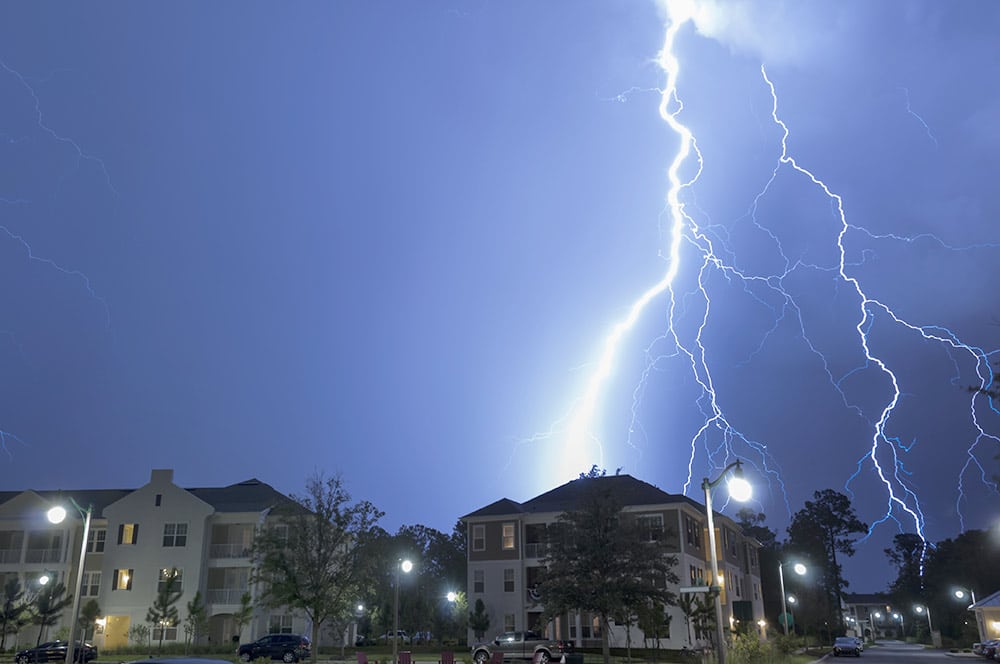Is Hazard Insurance the Same as Homeowners Insurance?
Posted April 19, 2024 in Hazard Insurance

When choosing a homeowner’s insurance policy, it’s essential to understand what it does and does not cover. This blog will highlight what clients can expect from a traditional homeowners insurance policy, such as damages to the home’s structure and personal property. It will also clarify what hazard insurance is and how it fits into your home insurance plan.
4 Min Read:
What Is Homeowners Insurance?
We all want a peaceful home, but how do you measure peace of mind? It often comes from feeling you can protect yourself and those you love, whatever the situation. Also called home insurance, homeowners insurance is a type of property insurance that covers damages or losses regarding a private residence.
This may conjure images of a fire or a fallen tree. It’s true that homeowners insurance can indeed protect against those sorts of emergencies. Still, the scope of what homeowners insurance covers is a bit more complicated than simply that.
For more information on how Gallant Risk & Insurance Services can assist you with Homeowners Insurance policies, call (951) 368-0700.
What Does Homeowners Insurance Cover?
There are different types of standard home insurance policies for homeowners to choose from, labeled by the prefix HO, so HO-3 or HO-3 are common. They all encompass different levels of protection, and their costs reflect that.
Whatever type you choose, a home insurance policy will typically include six coverage areas. The details of these coverage areas are subject to change, depending on your specific policy and the covered perils included.
Dwelling
Usually the first coverage section of a homeowner policy, Dwelling coverage refers to the protection of your house and any attached structures. This includes the replacement valuation of the dwelling along with debris removal, which accounts for approximately five percent of the replacement value
Other Structures
This coverage section deals with structures that are separate from the home, such as a detached garage, a storage shed, or a swimming pool.
Personal Property
This coverage section accounts for your belongings—even if you take them with you on a vacation. Like the structures covered in the first two sections, personal property is subject to named perils, which will be listed in your policy.
Loss of Use
If your home is being repaired and you are temporarily displaced, or if your home is unusable, this coverage section may help with additional living expenses. Additional expenses may include food, housing, and transportation.
Personal Liability
This section comes into play if you are responsible for causing accidental physical injury to others or property damage.
Medical Payments
This coverage section applies to minor injuries to others, such as if a guest trips and falls while visiting your home.
All of these sections are subject to the named perils in your policy, and the specifics will vary on the policy you choose.
What is Hazard Insurance?
This basic overview of the sections of a homeowners insurance policy helps clarify the difference between homeowners insurance and hazard insurance.
Essentially, hazard insurance is the same as the Dwelling section of your policy. This means that hazard insurance is part of your homeowners insurance policy.
Hazard insurance can financially protect you in the event that your house is damaged. The type of damage that is covered by dwelling coverage, or hazard insurance, is called a covered peril. These may include:
- Fire and lightning
- Theft
- Falling objects
Hazard insurance can also come in an open-peril policy, which means all events are covered except for those listed as exclusions. Common open-peril policy exclusions are:
- Neglect
- Power failure
- Nuclear hazard
- War
What Does Hazard Insurance Not Cover?
For the most part, the named perils in a homeowners insurance policy are separate from insurance for specific catastrophes or natural disasters. These include floods, earthquakes, and hurricanes. Due to the costly nature of response and recovery for these events, including them would make home insurance more expensive for everyone, even if they lived in areas that weren’t susceptible to, say, floods. To be covered by these, you will have to purchase separate insurance, such as flood insurance.
Is Hazard Insurance Required?
Typically, a mortgage lender will require you to have a minimum amount of hazard insurance in order to get a loan to buy a house.
Even if you buy the house in cash, hazard insurance is a good idea to protect the major investment you have made in your home. It is unwise to assume nothing will happen to you—statistics show that insurance claims are filed very frequently due to fire, theft, liability, and more every year, with numbers as high as one in 20. Without hazard insurance, you are fully responsible for the cost of damage repairs following a fire, theft, or other event. Out-of-pocket costs can add up and cost you a lot of money.
Rather than relying on high-interest credit cards or draining the savings you’ve worked hard to build, it is worth it to have hazard insurance in place so you’re protected and can enjoy peace of mind in case the unexpected happens.
Have More Questions About Hazard Insurance in Southern California?
If you want to learn more about hazard insurance, we’re here to help. Contact a Gallant Risk & Insurance Services consultant using our online form, or call us today at (951) 368-0700. We look forward to assisting you.